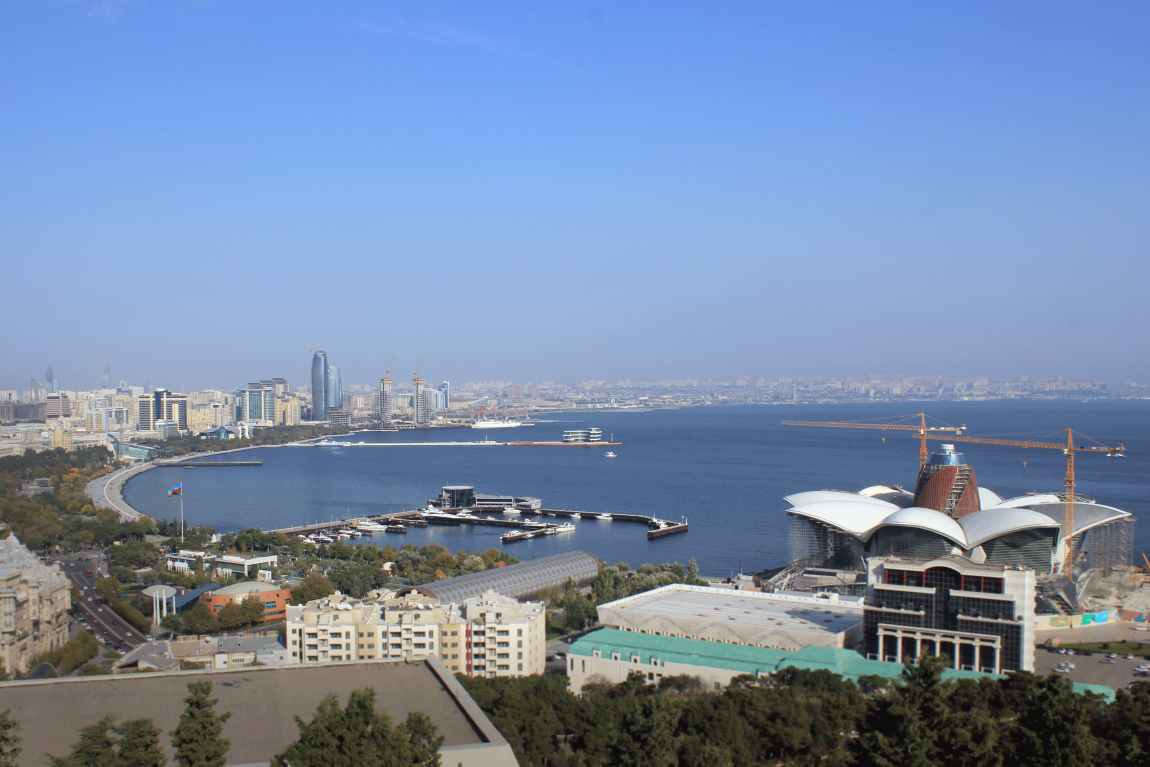
State Nature Reserves & National Parks
The Azerbaijani people have great respect for the beautiful landscapes that surround and meander through their cities. The government continues to create policy and restore natural habitats to ensure that continuation.
There are number of reserves and parks that are open for residents and tourists to explore in Azerbaijan, whether it be on the seashore or at the foot of the mountains. Each with their own unique character and atmosphere.
Nature Reserves
Natural State reservations are organised in land areas as defined by legislation to not be owned. Therefore it is not taken from land owner, leaser and user, but rather adopted by the State.
The protection and restoration of natural habitats are carried out by the Ministry of Environment and Natural Resources. State natural reservations are areas of special importance for protection or restoration of natural habitat. They are, along with their components, essential for the maintenance of ecological balance.
The first Reserve in Azerbaijan was established in 1961 during Soviet rule. The Soviets continued this process until its fall in the 1990’s.
In 2003 the Azerbaijnai government began re-establishing reservations. During the same year they opened the Gakh National Reservation. Later, in 2005 Araz and Hirkan, in 2008 Zagatala, in 2009 Arpachay and Rvarud State Natural Reservations were also created.
National Parks
Since 2003, as with nature reserves, the Azerbaijani government have re-established environmental policy. In 2003, as well as the opening of the Gakh National Reserve, the Ministry of Environment and Natural Resources also established Ordubad national park, which was named after academic, Hasan Aliyev, Shirvan. This was followed with the creation of Ag Gol parks, in 2004; Hirkan, Altiagac, in 2005; Apsheron, in 2006; Shahdagh and Goy gol National Parks, in 2008.
Furthermore, throughout and after 2008 the government have continued to expand and improve the territories of the National parks:
- Hirkan National Park, was expanded to 40358 hectares in 2008.
- On November 25, 2009, by decree of the President the territory of Ordubad National Park was expanded on account of Shahbuz State Nature Reserve, and lands of Shahbuz, Julfa, Ordubad regions and made 42797.4 hectares.
- With the same order, the name of the National Park was changed and named as Zangezur National Park after the academician Hasan Aliyev. By decree of Cabinet of Ministers of the Republic of Azerbaijan dated July 8, 2010 the area of Shahdag National Park was expanded by 14613.1 hectares t0 130508 hectares.
- At present, national parks constitute 3.6% of the country’s territory.
Regions & Parks To Visit:
Boulevard Park
‘Baku Boulevard’ is a promenade that falls against the seafront of the Caspian Sea, it was majority constructed in 1909 and has continuously grown along the seafront since.
Today the park contains various attractions such as musical fountains, yacht clubs and around 100 amusements such as a carousel. As you meander down the stretch of the Boulevard to the sounds of the turn of the century (atmospheric music played through speakers!) from the white city to ‘mini-Venice’ you are spoilt for food and leisure activities also, in the form of restaurants, bars, a mall, ornamental gardens and a display of plant varieties from across the whole of Azerbaijan.
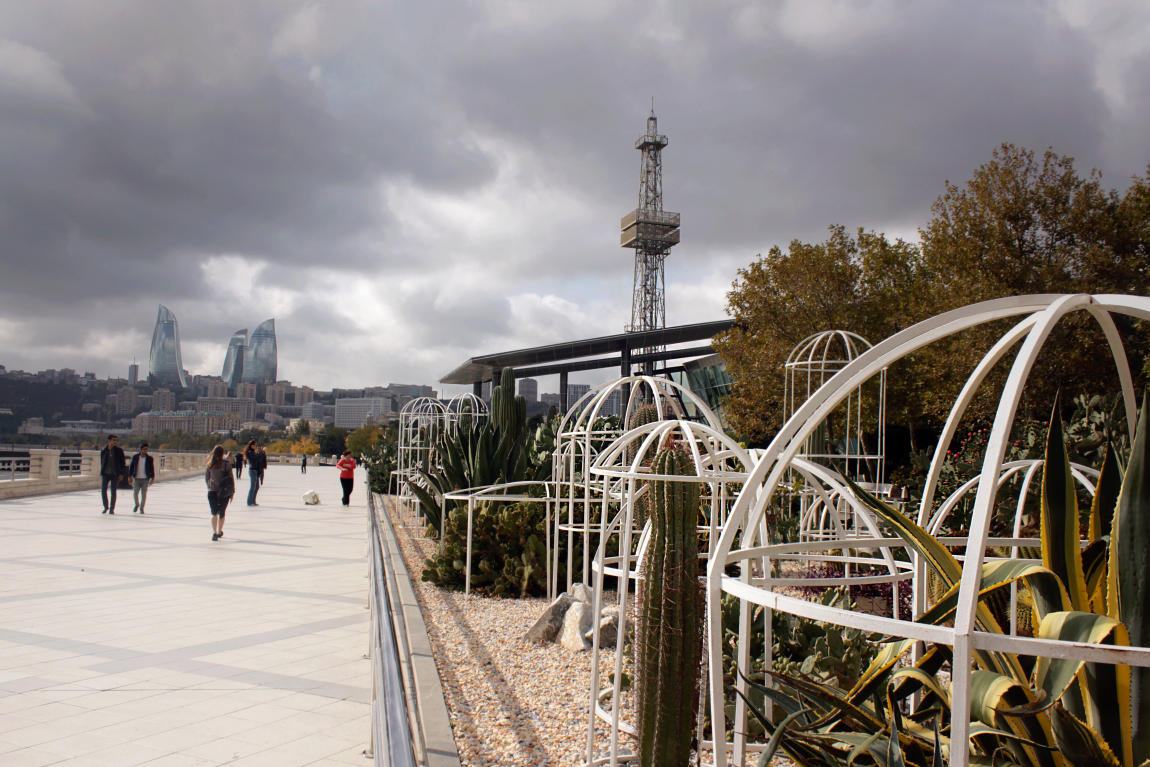
Construction:
Mammad Hassan Hajinski is a poignant name in the Boulevard’s past; a trained architect and at the time foreign minister, under the short term of the ADR he apportioned 60,000 rubles on improving the parks structure. Despite the lack of informed entries, the design of the park was picked and implemented very quickly through a competition, it included constructing further north and providing improvements which would make it better for recreation; very detailed, the plans also included a system which poured waste water into the Caspian Sea.
During its installations, tons of soil were imported to the shore in order to plant a vast number of trees to form the recreational park that it is today, until this point, trees were sparse and certainly didn’t contain the variety that there are now.
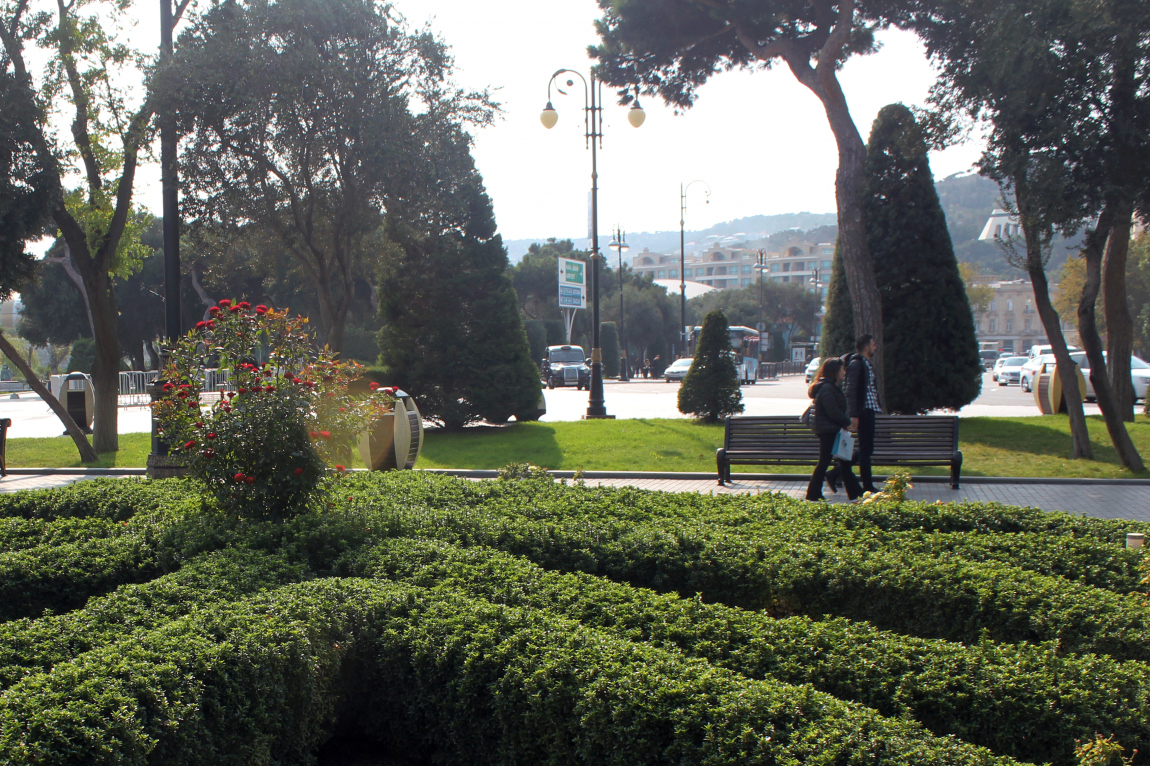
It was defined as a national park in 1999, which runs parallel to the governess then initiative to clean the shore of the Caspian sea from oil debris.
See Visit Azerbaijan pages for more activities on visiting Baku and the Boulevard.
The Qabala Region
The region of Qabala is a historical site of beauty within the north of Azerbaijan. Formally the capital of the ancient Caucasus, the region is surrounded by fortified walls and ancient buildings. It is in the middle of one of the 2500-year-old ‘silk road’ capillary route for trade which was crossed by many nations east to west and vice versa between 150BC and 1500 AD.
The Geographical positioning of the city itself is interesting as it is surrounded by mountainous regions with a vastly complex climate. There is a vast amount of vegetation as well as thick river systems created by the humid weather conditions. on the varied level mountain tops you are spoilt by beautiful views, and in the forests the array of native animals such as wild boar, wolves, foxes and colourful birds.
Qabala, which is known for natural sites of interest such as the Nohur Lake (which, used by the city was also declared a national reservoir in 1985) and Yeddi Gozel waterfall is also a know tourism spot. It boasts a theme park for kids, health and beauty complexes with luxurious spas nearly as well as lots of family hiking activities such as a cable car that takes visitors to the top of the Durja Mountain.
See Visit Azerbaijan pages for more activities on visiting Qabala and see Natural Sites Of Interest page in ‘In Environment’ to learn more about the Yeddi Gozel Waterfall.
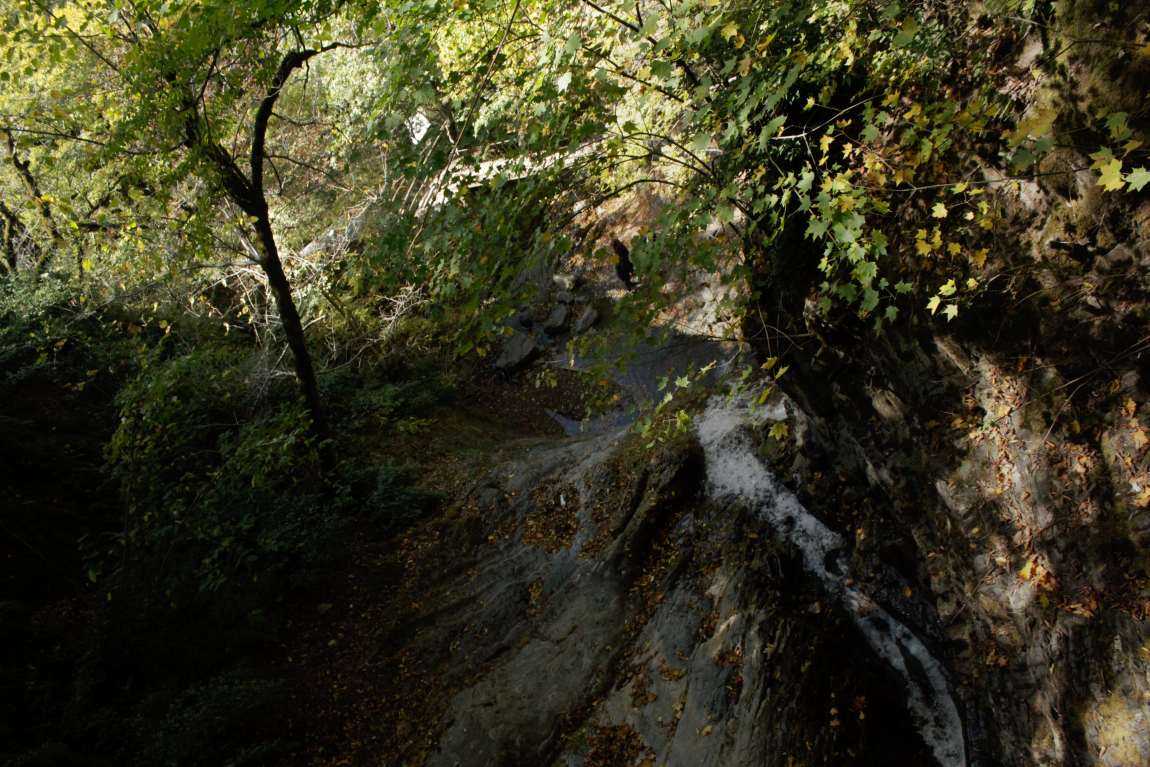
Gobustan National Park
Gobustan National park is a reserve located west of Baku (roughly an hours drive from the main city). It is home to a number of environmental, as well as man made beauty.
Gobustan is home to the infamous ‘mud volcanoes’ which are natural areas of gas which form mixture volcanoes spewing out ‘lava-lie’ mud trails. The park is also home to a huge site of prehistoric cave drawings, and for this reason is a certified UNESCO world heritage site.
On the top of the Gobustan rock, near the cave drawing site is another interesting phenomena – the ‘Gaval Dash’ (‘the musical stone’). This stone is two meters long and when hit with another smaller rock it rings a tambourine type sound. Although its exact origins are unknown it Is thought to be a rock formation created by ancient civilisations to be used in ancient rituals or to create harmonies.
Other rocks within the region also have capability to make these forms of sounds it is thought to be due to the climate combined with the effect of natural gases within this region.
See Natural Sites Of Interest page in In Environment to learn more about Mud Volcanoes and the InHistory page to learn more about ancient Azerbaijani civilisations.
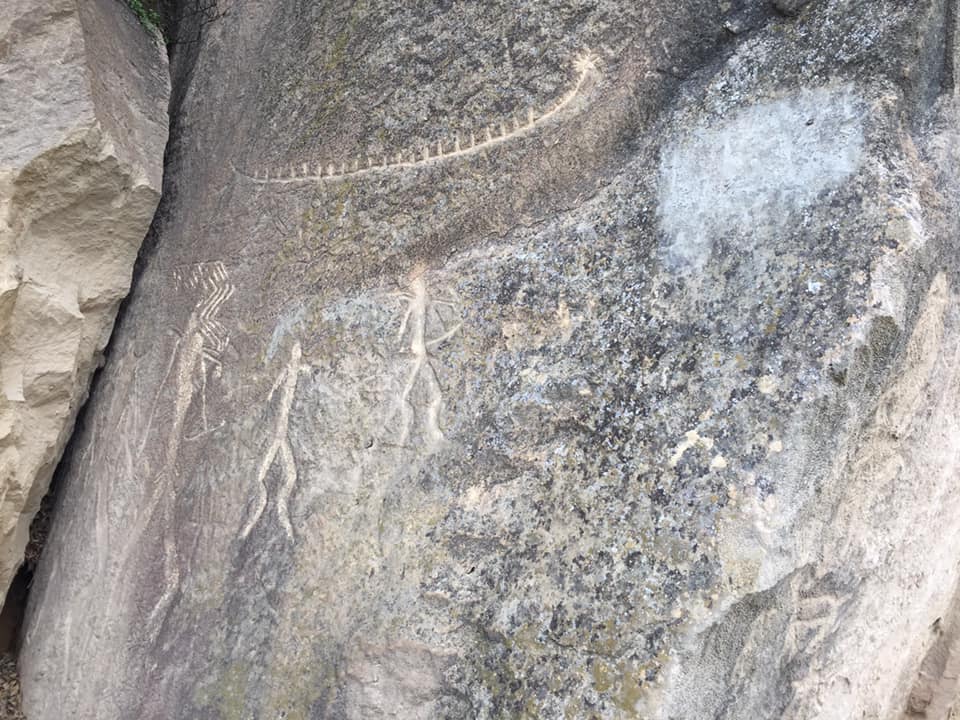
Environmental Parks
Although Azerbaijan is known for its oil production, it is also currently concerned on utilising alternative power sources in the environment. With Azerbaijan’s wholly warm and sunny climate, he most prominent renewable source being considered is solar power. A large solar plant has been commissioned on Parahli Island on the coast of the Caspian Sea as a start point for the scheme. It is the first phase of Azerbaijan’s work towards making its country more efficient in renewable energy sources by 2020. Azerbaijan aims to have 20% of their energy sources be renewable by 2020 and 50% by 2050.
